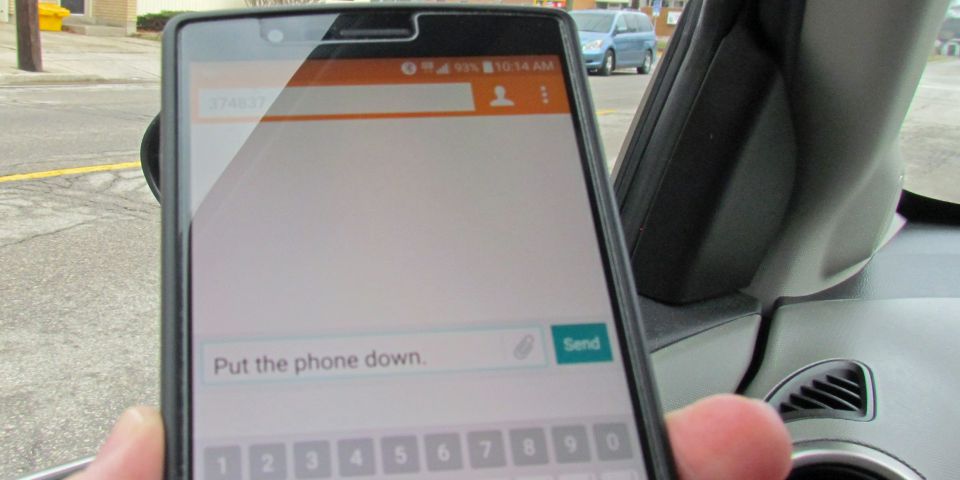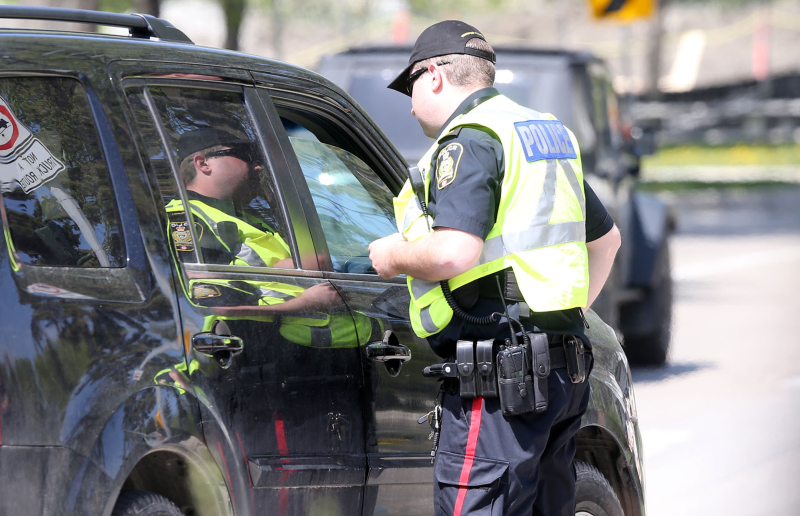Using a phone behind the wheel is more deadly than drunk driving — so why are we still doing it?

Paul Morden, Postmedia
A poll by the Canadian Automobile Association found that 33 per cent of Canadians admit they have texted while stopped at a red light in the last month. Texting while driving is a leading cause of injury on the road, according to the OPP.
A recent study by Desjardins Insurance presents a bit of a quandary; 80 per cent of respondents said they’ve seen others driving while distracted (overwhelmingly using a phone), yet only 38 per cent will cop to doing it themselves.
The survey, and other statistics like it, are important. In more and more places – Ontario is one of them – distracted driving has catapulted to become the top factor in fatal crashes. We’ve become so accustomed to dreading the drunks, we’re actually overlooking things that are even more deadly. In 2017, the OPP reported 83 deaths were caused by a distracted driver, 75 were the result of speeding, 49 were because someone wasn’t wearing a seatbelt (really, people?) and 46 were due to alcohol or drug impairment. Across the U.S. and Canada, distraction is rapidly becoming the number one cause of collisions.
“Many things can be considered a distraction,” says Desjardins spokesman John Bordignon. “Smartphones, other passengers and children, eating or drinking or the car’s touch screens.” But overwhelmingly, it’s the phones that are driving the steady climb in fatalities. It makes sense; there have been passengers as long as there have been cars, and drive thrus wouldn’t exist if many of us weren’t eating or drinking in our cars. That leaves the handheld devices, and the ever-changing technology loaded into our vehicles. While it’s fair to say that increased distracted driving reports may be due to increased vigilance and changing laws, it is disingenuous to pretend the explosive use of handheld devices hasn’t created a gaping chasm between behaviour and those laws. We can’t keep up.
While increased fines and demerits are piling up (a full list for all provinces can be found on the CAA’s website here), the Desjardins study found that might be the way to go: 55 per cent of Canadians said the threat of fines and facing hiked insurance rates worried them. 37 per cent said the fear of a crash would deter them. Either way, a full 68 per cent said that “current laws are not effective enough in deterring distracted driving.” We need a bigger kick in the wallet.

Riders-Qc / Facebook
A viral image of a man texting while driving a motorcycle on a Quebec highway.
“This is similar to impaired years ago,” he says. “It has to be socially unacceptable.” A third of respondents say they use their phone for GPS applications; younger drivers (16-24) being far more likely to use it for this purpose.
In spite of increasingly safer cars, fatality rates are starting to rise again after decades of going down. The vehicles are better at saving us, but at every turn, people are offering up the chance to prove it. The fallout is devastating not just for drivers and passengers, but for pedestrians and all other road users. Cities can adopt all the plans they want, such as Vision Zero, which aims to reduce pedestrian and cyclist deaths, but unless all road users buy into it, it will be fruitless.

Chris Procaylo / Winnipeg Sun Police forces across Canada continue to work against distracted driving, such as this team handing out several tickets to motorists on Tuesday, May 17, 2016 near the Midtown Bridge in Winnipeg, Manitoba.
Bordignon acknowledges that onboard technology plays a role in distraction. Manufacturers are sorting ways to not let you fiddle with GPS systems on the road, though as consumers demand and get used to increasingly more involved systems, those same touchscreens will necessarily become more complex.
“People need to thoroughly understand the system in their car,” he says. “Spend time so you’re not taking your eyes from the road.” Personally? If I have to jam through three levels of touchscreens to change volume or heat, that’s a deal breaker. Play close attention to this when you’re buying a car.
And more to the point of how we make distracted driving as anathema as drunk driving, it’s in our modelling. If our kids grow up watching us texting and making calls, we’re sending out the message that it’s okay. It’s not; practice what you preach. The idea that people are dying because they just had to send or read a text should be as abhorrent as flipping the keys to a fall-down drunk.
Source: Driving.ca
